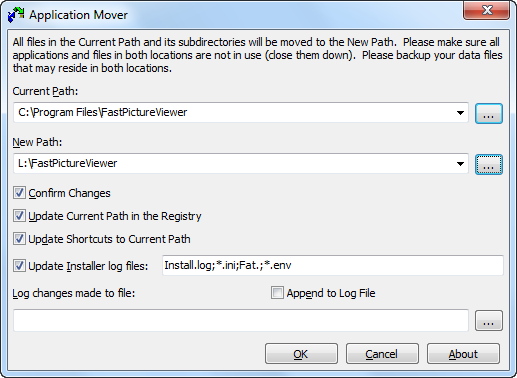If you ran out of space on your primary partition because you installed too many applications on it, there are two methods to relocate the applications to another drive without going thorough the usual uninstallation and reinstallation procedure.
Safe Method
The first program we will look into is SteamMover. Originally it was developed to help heavy gamers to re-arrange the space on their hard drive by moving their Steam directory to another drive. Moving a game from one disk to another, without re-installing it, and risk loosing any saved game data is quite a daunting task. SteamMover makes this easy.
The program works by moving installed applications and associated data to another drive and simply leaves a shortcut in the old location that points to the new location. Steam Mover works not only on games downloaded through the Steam client but with other applications, too.

To move a installed program simply choose the target programs folder in SteamMover’s window and the destination folder. The program will then display a list of any programs installed in that folder. All you have to do it to highlight the program to move, and then click on the move button. When it is done you will see the new location of your program listed under ‘Junction Point’. You can still access your programs from Windows start menu as usual.
To restore a programs location simply click the left arrow button and let SteamMover do the rest.
SteamMover requires Windows Vista or Windows 7. It will not work on Windows XP. Also it requires NTFS formatted drives and will not work with FAT32.
Adventurous Method
SteamMover is safe as it doesn’t tinker with the registry or try to re-write installation paths. All it does is leave shortcuts. Our second program, however, does both and hence I’ve called it the ‘adventurous method’.
The program Application Mover first moves files under 'Current Path' field to a new location specified by the 'New Path' in the program window. Application Mover than scans the registry for references to files located in the old location and changes those references to the new location. Application Mover also scans all windows shortcuts in the Start Menu and replaces the path references to the new program location. Finally, all .ini and Install.log files present in the original program path are checked for strings matching the old path location. If found, these strings are changed to the new location.

If you enable the 'Confirm changes' checkbox in the program window, you will get confirmation dialogs before each change is carried out. Files that are currently in use and cannot be moved are taken care of by rebooting the machine and moving them during the next boot.
The developers do not recommend moving highly complex programs such as Microsoft Office. Programs like MS Office install files in many different subdirectories and make hundreds (even thousands) of registry entries. Although they have said to successfully moved components of MS Office themselves, but it’s better if you not try this. Norton System Works is also asked to avoid.
Adobe Photoshop can be moved but make sure you have your license key and original installation media, in case something goes wrong. This is recommended not only while moving Photoshop but any important application.
SteamMover is safe but it leaves shortcuts in the program's previous location which you cannot remove. Doing so will make you unable to access those applications. Application Mover on the other hand does a complete relocation. No traces are left in the program’s original location.

Comments
Post a Comment